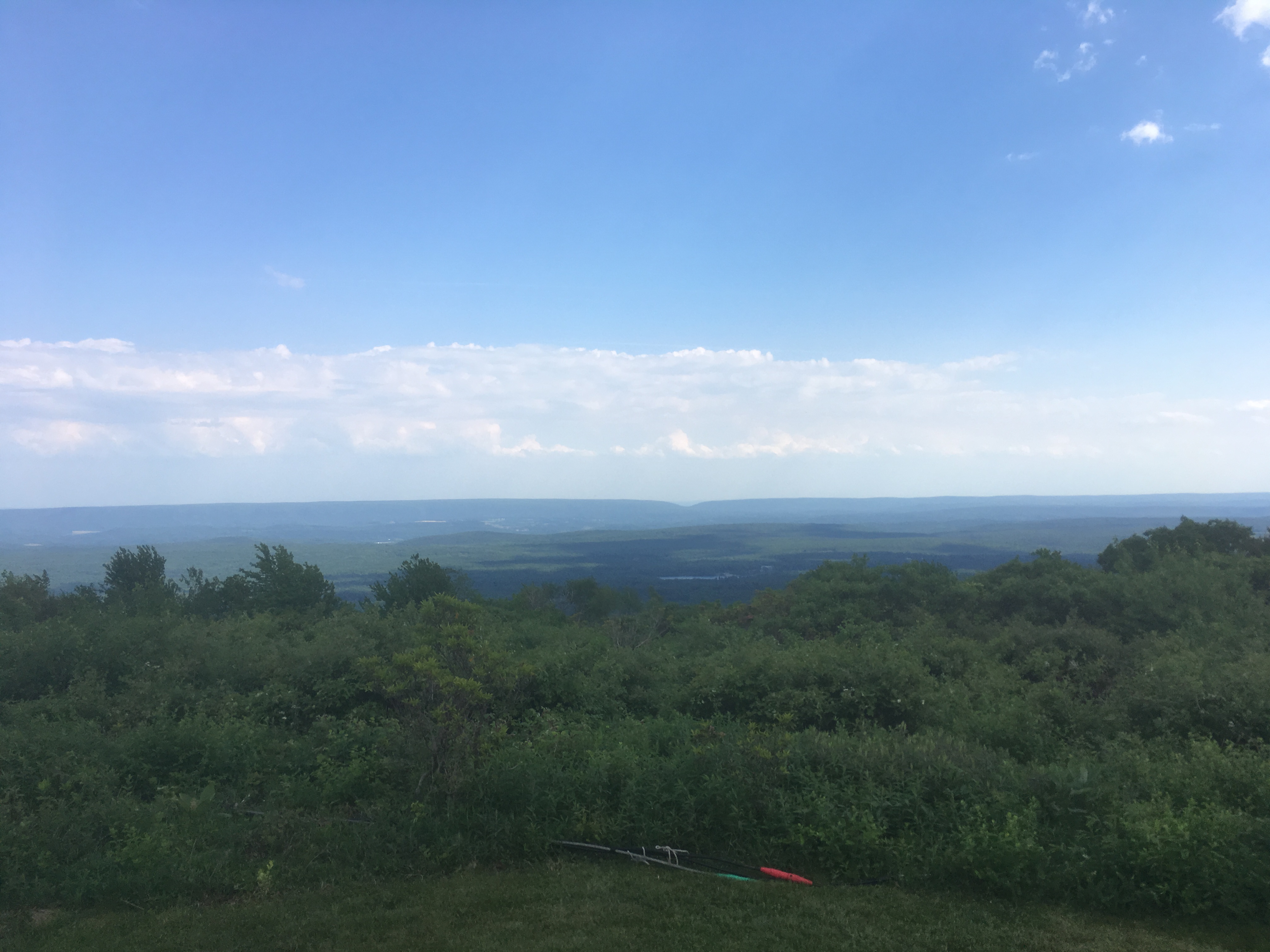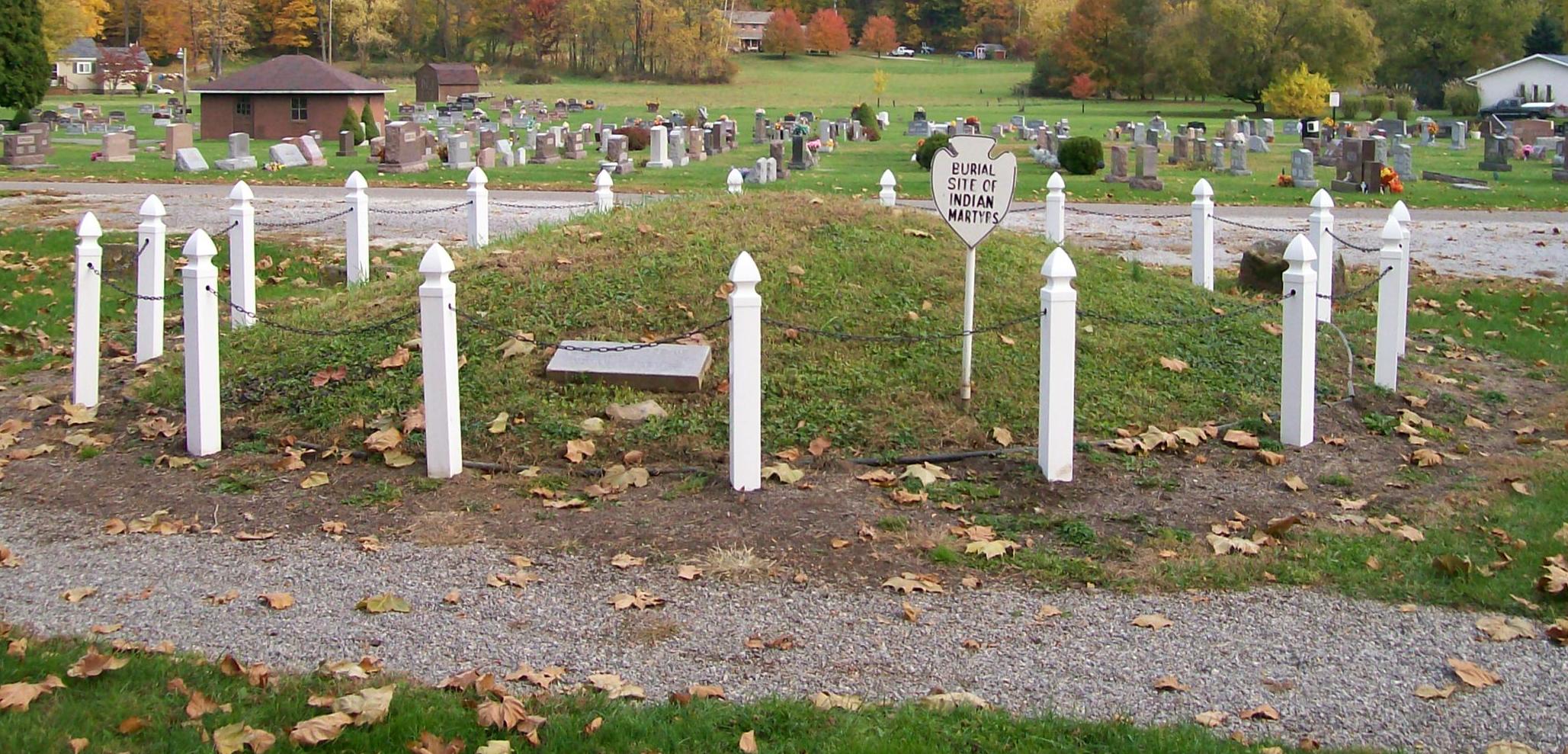|
Fort Norris
Fort Norris was a stockaded fort built at the orders of Benjamin Franklin in early 1756 in what is now Monroe County, Pennsylvania, following a series of attacks on local communities by Native Americans in December 1755. Construction was initiated in late January, at the same time that neighboring forts Fort Allen (Carbon County, Pennsylvania), Allen, Fort Hamilton (Pennsylvania), Hamilton, and Fort Franklin (Schuylkill County, Pennsylvania), Franklin were being built. The fort was named for Isaac Norris (statesman), Isaac Norris, speaker of the Pennsylvania Provincial Assembly, who was a member of the planning committee charged with designing defenses in preparation for the French and Indian War. Located about fifteen miles east of Fort Allen (Carbon County, Pennsylvania), Fort Allen, it was one in a chain of defensive posts running from the New Jersey border, southwest to the Maryland border, when attacks on settlements were frequent at the beginning of the French and Indian War. ... [...More Info...] [...Related Items...] OR: [Wikipedia] [Google] [Baidu] |
Monroe County, Pennsylvania
Monroe County is a county in the Commonwealth of Pennsylvania. As of the 2020 census, the population was 168,327. Its county seat is Stroudsburg. The county is part of the Northeast Pennsylvania region of the state. The county was formed from sections of Northampton and Pike counties on April 1, 1836. It was named in honor of James Monroe, the fifth president of the United States. The county borders Northampton County and the Lehigh Valley to its south, Pike and Wayne counties to its north, Carbon and Luzerne counties to its west, and the Delaware River and Warren County, New Jersey to its east. It is part of the New York metropolitan area, but also receives media from the Scranton/Wilkes-Barre and Philadelphia radio and television markets. In the late 20th and early 21st centuries, Monroe County was one of the fastest-growing counties in Pennsylvania, largely due to Pocono Mountain-related tourism and partly due to an influx of residents from New York City and its m ... [...More Info...] [...Related Items...] OR: [Wikipedia] [Google] [Baidu] |
Blockhouses
A blockhouse is a small fortification, usually consisting of one or more rooms with loopholes, allowing its defenders to fire in various directions. It is usually an isolated fort in the form of a single building, serving as a defensive strong point against any enemy that does not possess siege equipment or, in modern times, artillery, air force or cruise missiles. A fortification intended to resist these weapons is more likely to qualify as a fortress or a redoubt, or in modern times, be an underground bunker. However, a blockhouse may also refer to a room within a larger fortification, usually a battery or redoubt. Etymology The term ''blockhouse'' is of uncertain origin, perhaps related to Middle Dutch ''blokhus'' and 18th-century French '' blocus'' (blockade). In ancient Greece Blockhouses existed in ancient Greece, for example the one near Mycenae. Early blockhouses in England Early blockhouses were designed solely to protect a particular area by the use of arti ... [...More Info...] [...Related Items...] OR: [Wikipedia] [Google] [Baidu] |
A New And Accurate Map Of The Province Of Pennsylvania, In North America - From The Best Authorities
A, or a, is the first letter and the first vowel letter of the Latin alphabet, used in the modern English alphabet, and others worldwide. Its name in English is '' a'' (pronounced ), plural ''aes''. It is similar in shape to the Ancient Greek letter alpha, from which it derives. The uppercase version consists of the two slanting sides of a triangle, crossed in the middle by a horizontal bar. The lowercase version is often written in one of two forms: the double-storey and single-storey . The latter is commonly used in handwriting and fonts based on it, especially fonts intended to be read by children, and is also found in italic type. In English, '' a'' is the indefinite article, with the alternative form ''an''. Name In English, the name of the letter is the ''long A'' sound, pronounced . Its name in most other languages matches the letter's pronunciation in open syllables. History The earliest known ancestor of A is ''aleph''—the first letter of the Phoenician ... [...More Info...] [...Related Items...] OR: [Wikipedia] [Google] [Baidu] |
Smithfield Township, Monroe County, Pennsylvania
Smithfield Township is a township in Monroe County, Pennsylvania, United States. The population was 8,001 at the 2020 census. History "In 1746, the first action was taken for the formation of Smithfield Township, the first municipal division north of the Blue Mountains. The petition contained the names of twenty-seven landholders."Luther S. Hoffman, ''The Unwritten History of Smithfield Township, Monroe County, Pennsylvania'' (East Stroudsburg, Pennsylvania: The Artcraft Press, 1938), p. 4. The township comprised all the settlements above the mountains. Originally in Bucks County, Smithfield Township was erected in 1748."Local History Articles," database, ''Monroe County ennsylvaniaHistorical Association'' (http://www.monroehistorical.org/articles_files/022211_smithhamtwp.html: accessed 24 September 2018), Our earliest townships: Smithfield and Hamilton, by Amy Leiser, February 02, 2011. "In 1752, when Northampton County was set off from Bucks County, it comprised all of Smit ... [...More Info...] [...Related Items...] OR: [Wikipedia] [Google] [Baidu] |
Fort Dupuy
Fort Depuy, sometimes referred to in contemporary documents as Depui's Fort, Dupui's Fort, and various other spellings, is a Fortified house, fortified homestead located in Shawnee on Delaware, Pennsylvania, Shawnee on Delaware, a village in Smithfield Township, Monroe County, Pennsylvania, Smithfield Township. It was one of many forts in Colonial Pennsylvania built in 1755 and 1756 during the French and Indian War following a series of attacks on local communities by Native Americans in December 1755. The fort never saw military action and was garrisoned from early 1756 until February 1757. After this, the fort was used only intermittently until the garrison was withdrawn to participate in the Forbes Expedition in May 1758. The fort was formally returned to the Depuy family in 1763. History The need for fortifications At the beginning of the French and Indian War, Braddock's defeat at the Battle of the Monongahela left Pennsylvania without a professional military force. Lena ... [...More Info...] [...Related Items...] OR: [Wikipedia] [Google] [Baidu] |
Gnadenhütten Massacre
The Gnadenhutten massacre, also known as the Moravian massacre, was the killing of 96 pacifist Moravian Christian Indians (primarily Lenape and Mohican) by U.S. militiamen from Pennsylvania, under the command of David Williamson, on March 8, 1782, at the Moravian missionary village of Gnadenhutten, Ohio Country, during the American Revolutionary War. Due to their commitment to Christian pacifism, the Moravians did not take sides during the American Revolutionary War, which caused them to be viewed with suspicion by both the British and the Americans. As the Moravians were collecting crops, Pennsylvania militia encountered them and falsely promised the Moravians that they would be "relocated away from the warring parties." Once they were gathered together, however, the American militia rounded the unarmed Moravians up and said that they planned to execute them for being spies, charges that the Moravians rebutted. The Moravians asked their captors to be allowed to pray and ... [...More Info...] [...Related Items...] OR: [Wikipedia] [Google] [Baidu] |
Great Cove Massacre
The Great Cove massacre was an attack by Shawnee and Lenape warriors led by Shingas, on the community of Great Cove, Pennsylvania (sometimes referred to as Big Cove, modern day McConnellsburg, Pennsylvania in what was, at the time, Cumberland County) on 1 November 1755, in which about 50 settlers were killed or captured. Following the attack, settlers returned to the community to rebuild, and the Provincial Council of Pennsylvania began constructing a chain of forts and blockhouses to protect settlers and fend off further raids. These forts provided an important defense during the French and Indian War. Background The communities of Great Cove, Little Cove ( Franklin County) and the Conolloways were probably settled soon after 1730 by Scotch-Irish immigrants. The land at that time was still recognized as belonging to Native Americans, but settlers set up homesteads and cleared the land without seeking formal ownership, in spite of "frequent prohibitions on the part of the go ... [...More Info...] [...Related Items...] OR: [Wikipedia] [Google] [Baidu] |
Easton, Pennsylvania
Easton is a city in and the county seat of Northampton County, Pennsylvania, United States. The city's population was 28,127 as of the 2020 United States census, 2020 census. Easton is located at the confluence of the Lehigh River and the Delaware River. Easton straddles the Lehigh River on the western side of the Delaware River, which serves as the city's eastern geographic boundary with Phillipsburg, New Jersey. Easton is the easternmost city in the Lehigh Valley, a region of that is Pennsylvania's third-largest and the nation's 68th-largest Metropolitan statistical area, metropolitan region with 861,889 residents as of the 2020 United States census, U.S. 2020 census. Of the Valley's three major cities, Allentown, Pennsylvania, Allentown, Bethlehem, Pennsylvania, Bethlehem, and Easton, Easton is the smallest with approximately one-fourth the population of Allentown, the Valley's largest city. The greater Easton area includes the city of Easton, three townships (Forks Township ... [...More Info...] [...Related Items...] OR: [Wikipedia] [Google] [Baidu] |
Bethlehem, Pennsylvania
Bethlehem is a city in Northampton County, Pennsylvania, Northampton and Lehigh County, Pennsylvania, Lehigh counties in the Lehigh Valley region of eastern Pennsylvania, United States. As of the 2020 United States census, 2020 census, Bethlehem had a total population of 75,781, making it the second-largest city in the Lehigh Valley after Allentown, Pennsylvania, Allentown and the List of cities in Pennsylvania, sixth-largest city in the state. Among its total population as of 2020, 55,639 were in Northampton County and 19,343 were in Lehigh County. The city is located along the Lehigh River, a tributary of the Delaware River. Bethlehem lies in the geographic center of the Lehigh Valley, a metropolitan region of with a population of 861,899 people as of the 2020 census that is Pennsylvania's Pennsylvania metropolitan areas, third-most populous metropolitan area and the 68th-most populated Metropolitan statistical area, metropolitan area in the U.S. Bethlehem borders Allentow ... [...More Info...] [...Related Items...] OR: [Wikipedia] [Google] [Baidu] |
Moravian Historical Society
The Moravian Historical Society in Nazareth, Pennsylvania, was founded in 1857. Its mission is to preserve, interpret, and celebrate the rich culture of the Moravians. It is the third oldest historical society in the Commonwealth of Pennsylvania. The Moravian Historical Society is located in the 1740-1743 Whitefield House in downtown Nazareth. The Moravian Historical Society collects objects relating to Moravian history, provides research assistance, publishes, and offers lectures, programs, events, and activities for all ages and levels of interest. Site The Moravian Historical Society is located on a three-acre historic site in Nazareth, PA. It maintains two historic buildings, the 1740-1743 Whitefield House and the 1740 Gray Cottage, the oldest surviving Moravian structure in North America. History of the Site In 1740, a Moravian group from Savannah, Georgia was invited by British cleric George Whitefield to build a school on his 5000-acre Nazareth tract, which he had pu ... [...More Info...] [...Related Items...] OR: [Wikipedia] [Google] [Baidu] |
Daniel Brodhead
Brigadier General Daniel Brodhead (October 17, 1736 – November 15, 1809) was an Continental Army officer and politician who served in the American Revolutionary War. Early life Brodhead was born in Marbletown, Province of New York, the son of Daniel Brodhead II and Hester (Wyngart) Brodhead. Brodhead's father moved his family to what is now East Stroudsburg, Pennsylvania, in 1737. Life in the frontier settlement was difficult, as Native American bands, mostly Lenape and Susquehannock, resisted settlers' encroachment. The Brodhead homestead was attacked by natives numerous times during Daniel's youth. When his father died in 1755, Brodhead was left with 150 acres from the estate. In December 1755, the plantation was attacked and a barn and barracks burned, but Brodhead and his family succeeded in fighting off the attackers. Daniel Brodhead and his four brothers, Charles, Garret, John and Luke, along with his 12-year-old sister, Ann, fired at the attackers through win ... [...More Info...] [...Related Items...] OR: [Wikipedia] [Google] [Baidu] |





